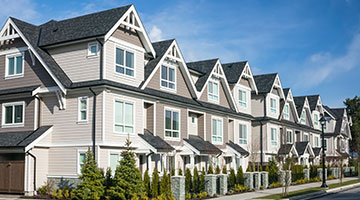
Reserve Study Guidelines
Are you aware of the significant changes in the Community Association Institute (CAI)’s recommendations for best practices in future reserve fund studies? If you are not, you are not alone. In July 2023, the Foundation for Community Association Research published its Best Practices – Community Association Maintenance manual. Let me explain why this 68- page ‘Maintenance’ manual should be a must read for every condominium or HOA board member. It is available in printed form and the no cost digital version can be downloaded from CAI’s website.
Most reserve fund studies in the recent past have used CAI’s Best Practices – Reserve Studies / Management manual published in 2007 as a guideline on how to perform a quality reserve fund study. Though this guideline is still relevant, things have changed with the new 2023 ‘Maintenance’ manual. No longer is a reserve fund study’s primary focus budgetary but rather future reserve fund studies should expand to incorporate both safety and preventive maintenance needs. As CAI states, CAI “…recognized need for greater clarity in the role of maintenance planning and programming in communities”.
Following the June 2021 tragedy in Surfside, Florida with the collapse of Champlain Towers South and the loss of 98 occupants, CAI commissioned a special committee of reserve fund experts contributing to the Condominium Safety Public Policy Report (October 2021). Among other points of emphasis was condo boards’ life-safety responsibilities and duties of loyalty and care. The special committee’s ‘Maintenance’ manual further recommends expanding typical reserve components to include preventative maintenance in future reserve fund planning as well as infrastructure inspections when warranted.
This is a departure from prior reserve fund guidelines where preventive maintenance and infrastructure inspections were not included or funded as reserve component line items. It is now recommended the judgement of the reserve study provider determines the inclusion of these types of component items when based on a degree of engineering certainty. It is further suggested the community’s historical pattern of maintenance expenses should be considered in determining if any of these expenses should be included in the reserve budget. Other historical reviews should include any work performed on the reserve components since the prior study was performed. In fact, all available service provider reports and information regarding the physical components should be reviewed.
What’s Included
While reserve studies will now reflect the board’s life-safety responsibilities, reserve studies will continue to evaluate information regarding the physical status and repair/ replacement cost of the association’s major common area components using component inventory, a condition assessment, and valuation estimates. Some of the new ‘Maintenance’ manual’s recommendations are subtle while others are not, such as decreasing the recommended period of site inspections from five to every three years.
Another significant recommendation is components are not restricted to physical items. This could include professional inspections, evaluations, or related building services when additional expert advice is needed, and an asset’s deterioration is in question. Therefore, common area preventive or corrective maintenance projects qualify as reserve components if they otherwise meet the definition of ‘component’. Thus, a reserve component is not required to be a cyclical replacement. Now a periodic structural inspection could be reserve component.
In the past component replacement was estimated as a ‘like kind’ of component. It is now recommended consideration should be given to logical upgrades to an existing asset or system now viewed as obsolete or inefficient in meeting the needs of the association. Judgement on these upgrades can be based on ongoing preventive maintenance costs and an evaluation of energy costs using higher efficiency equipment. Selection of components and their estimated useful life and remaining useful life may consider energy usage and ongoing maintenance costs with the resulting impact on total budgetary expenses and total life cycle costs.
Long-life components (i.e., > 30 years) have long been a subject of debate on their presentation in reserve studies. Often boards ignored long-life infrastructure components, hidden electrical and mechanical systems and their associated replacement costs. In effect, if the component’s replacement did not occur within the reserve study’s 30-year window, the study ignored future funding needs and kicked the can down the road for a future board to address. The new ‘Maintenance’ manual recommends long-life components should not be ignored but made visible in the study. Methodologies for reporting long-term projects include:
- Inclusion of long-life components with funding in the study.
- Addition of long-life components with funding at the time when they fall within the 30-year period from the date of study preparation.
- Identification of long-life components in the component inventory, even when they are not yet being funded in the 30-year funding plan.
Despite this new emphasis on preventive maintenance, it should always be remembered a reserve fund study is not a preventive maintenance plan, and a preventive maintenance plan is recommended for all associations. A quality reserve fund study is a path to avoid deferred maintenance; special assessments; lower property values; and liability exposure for all. This is a plan to meet the board’s primary mandate to ‘Maintain, Protect and Enhance.’
Written by Jack Carr, P.E., R.S., LEED-AP, Senior Consultant Criterium Engineers
Published in Condo Media



 Make sure you actually need one, too
Make sure you actually need one, too
 Perhaps you are on the Building Committee which has been charged by the Board to recommend a replacement siding material for your 35 year old condo. Perhaps you are a property manager whose in-basket is filled with unit owner complaints about vinyl clapboard siding problems in the new condo complex. Whatever the vinyl façade issue is, the future solutions may surprise you.
Perhaps you are on the Building Committee which has been charged by the Board to recommend a replacement siding material for your 35 year old condo. Perhaps you are a property manager whose in-basket is filled with unit owner complaints about vinyl clapboard siding problems in the new condo complex. Whatever the vinyl façade issue is, the future solutions may surprise you. Cracks in foundations are by far the most common structural complaint raised in either reserve fund studies or transition studies. They can occur in the youngest or newest condo building. As condo documents usually assign the maintenance responsibility of their repair to the association, board members and property managers take them very seriously. Missouri condo buildings have many types of foundations including concrete block; brick; and mortared stone with the most common being poured concrete.
Cracks in foundations are by far the most common structural complaint raised in either reserve fund studies or transition studies. They can occur in the youngest or newest condo building. As condo documents usually assign the maintenance responsibility of their repair to the association, board members and property managers take them very seriously. Missouri condo buildings have many types of foundations including concrete block; brick; and mortared stone with the most common being poured concrete.
 FIDUCIARY DUTY
FIDUCIARY DUTY
